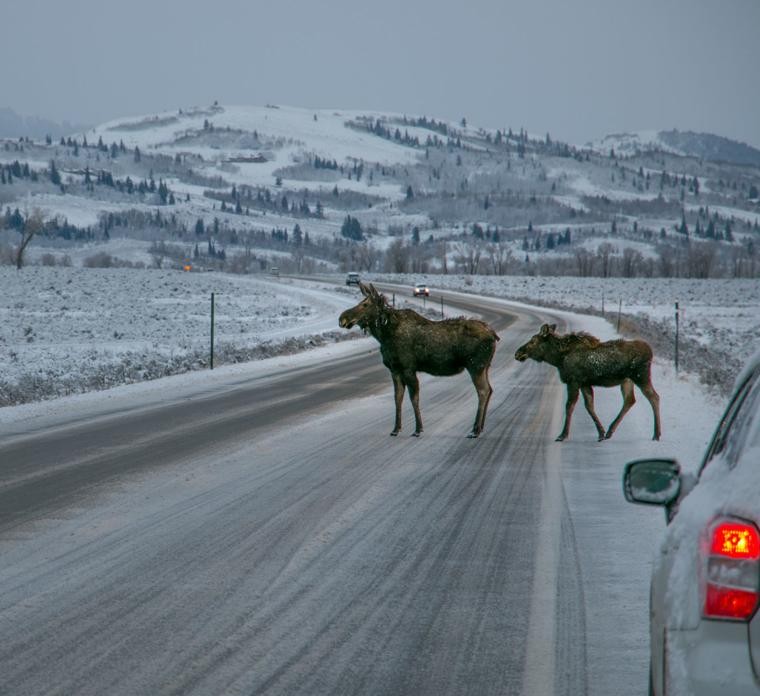Drivers in the Intermountain West’s highways always have to be on the lookout for wildlife, but a new study shows they should be especially wary of encountering moose on the road.
A study by the Journal of the American College of Surgeons recently analyzed 500 crashes in Northern New England and found that vehicle crashes involving moose are 13 times more likely to result in death than an accident with a deer.
Researchers for the study analyzed motor vehicle crash data from state fish and wildlife agencies in Vermont, New Hampshire, Maine, the Maine Department of Transportation and three trauma centers in Maine and New Hampshire.
Most of the crashes occurred in Maine, according to the study, with researchers analyzing 50,281 collisions with deer and 7,062 with moose from 2003 to 2017.
“Obviously, this issue is localized to the northern areas of the United States, but it is also a significant issue in Canada and Scandinavia,” lead author David E. Clark of the Center for Outcomes Research and Evaluation at Maine Medical Center said in a news release. “Medical professionals in these geographic regions should be aware of the typical injury pattern and should support preventive efforts.”
The report describes moose as “massive animals, weighing from 800 to 1,300 pounds and standing as tall as 6 feet, 6 inches at the shoulder.”
It said, “(when the front of a vehicle strikes a moose, it tends to impact its long legs, sending the bulk of the animal to collide into the windshield and roof.”
The researchers found that motor vehicle collisions involving moose are most frequent after sunset and, to a lesser extent, near sunrise, the report said.
“However, the risk of fatal collision is almost three times greater at midday than at other times during the day, perhaps because of speed and driver factors,” it said.
Seasonally, collisions are more frequent in the late spring and summer, it said.
Eastern Idaho is not immune to accidents involving moose.
From 2010 to 2014 , there were 94 reported crashes with wildlife on U.S. Highway 20, which were 16 percent of the total 572 reported crashes. Seventeen of those involved moose, according to a 2016 Idaho Transportation Department report looking at U.S. 20 and wildlife.
Moose are a high concern in the Falls River-Chester segment of U.S. 20, according to the report, as well as U.S. 87 toward Henry’s Lake and Yellowstone National Park.
Other areas common for moose include Big Bend Ridge, Osborne Bridge to Macks Inn and almost the entire Caribou-Targhee National Forest Region, according to the report.
Fremont County Sheriff Len Humphries said collisions with moose aren’t common, but drivers should be cautious due to the high amount of moose in the region.
He said most car collisions with moose that he knows of have happened on U.S. 20. On Friday, he recalled two incidents: a family that hit a moose near Island Park and when a motorcyclist died after his motorcycle ran into a moose about 20 years ago.
“The car takes the legs out of the moose and then it comes through the windshield,” Humphries said. “It was a family from India and when the EMTs got there, there was blood and gore everywhere. Miraculously, no one from the family was seriously injured, as all the blood was from the moose.”
Living in Egin, a community right outside Fremont County, Humphries says he and his wife have had moose come into their yard, though he hasn’t come across one while driving recently.
He says to be safe, drivers should try and watch for signs of animals on the side of the road. Do not swerve or try to evade animals while driving, he said.



